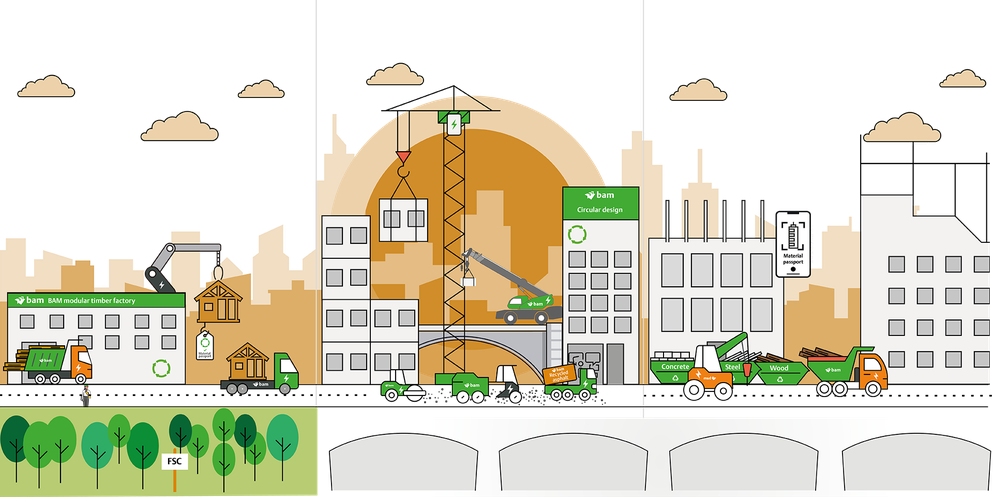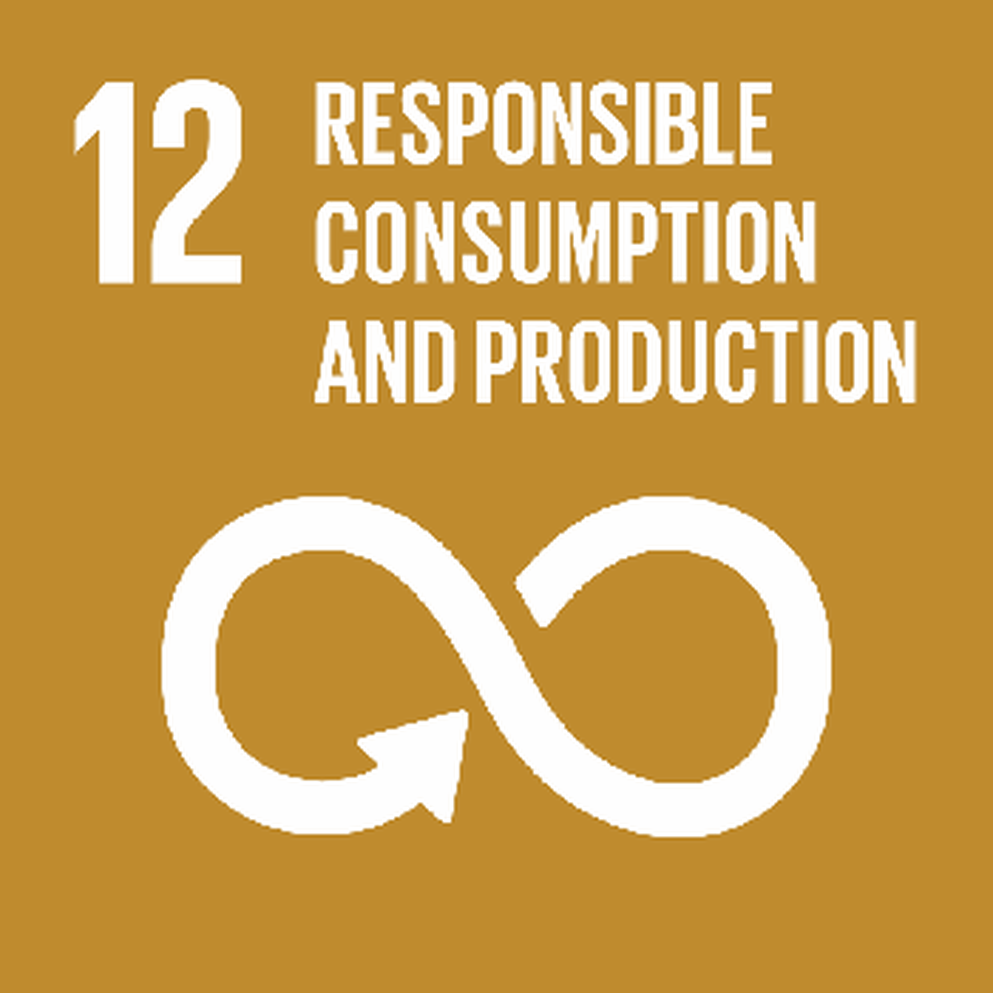
Circularity
Delivering circular products by maximising resource efficiency and eliminating waste
- 2030: -50% non-biobased virgin materials versus 2019
- 2030: A,B,C* and industrialised projects with design in their scope to use the material passport
- 2030: A,B,C* and industrialised projects with design in their scope to use the circularity assessment
- 2030: -75% construction and office waste intensity versus 2015
* BAM uses a classification system based on the size and risk profile of its projects, ranging from A (highest classification) to E. A, B, and C projects typically represent medium to large projects.

Resource depletion is an important factor in using the earth’s resources, and a major driver of polluting emissions. BAM is keen to implement circular principles that either extend or close the project life-cycle loop, making more efficient use of resources and therefore contributing to SDG 12. In the short term, BAM targets to improve the visibility of material use and offer options for circular construction methods. Furthermore, documentation of which materials are used in a particular construction maximises their reuse potential. The use of material passports and circularity assessments can support decision-making about which circular design principles to implement in the design phase of a project. BAM also continues to reduce the construction and office waste created in its production processes.



